Marchés
Lors de la conception d’une intervention humanitaire et de la prise de décisions quant à l’utilisation des transferts monétaires, l’analyse générale des options de réponse doit inclure une analyse de marché. Il est prouvé qu’offrir un soutien ciblant le fonctionnement des marchés accélère la reprise et accroît la résilience dans les zones affectées par une catastrophe.
De nombreuses organisations ont investi dans la mise au point d’outils visant à faciliter l’analyse de marché et réfléchissent à la mise en place de programmes basés sur les marchés plus holistiques. Elles envisagent des interventions tirant profit du marché (basées notamment sur des transferts monétaires aux populations affectées), ainsi que des interventions soutenant directement les marchés (comme l’octroi de subventions conditionnelles aux vendeurs/euses pour la remise en condition du marché).
Initiatives associées
Contenu associé

1.2 Introduction à l’analyse de marché
Cours
Ce cours de 30 minutes offre une introduction à l’analyse de marché pour les contextes d’urgence. Il contient des contributions d'experts dans ce domaine. Ce cours a été développé en collaboration avec l'International Rescue Committee et le CALP Network et grâce au financement d’USAID/OFDA et de l’Agence Suisse pour le Développement et la Coopération. Il est destiné aux...

2.4 Un guide pratique pour l’analyse de marché
Cours
Ce cours en ligne de 3.5 heures vise à fournir aux équipes qui conduiront des analyses de marchés en contextes humanitaires une compréhension approfondie de la théorie et des étapes à suivre afin de leur permettre de comprendre le pourquoi et le comment du processus à suivre. Les participants seront guides à travers un scenario d'analyse de marchés d'urgence. Ce cours s'appuie sur...
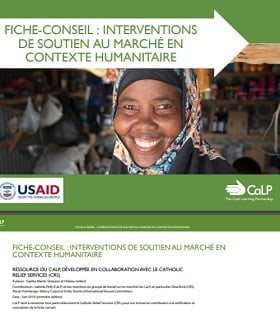
Fiche-Conseil : Interventions de soutien au marché en contexte humanitaire
Guides et outils
La fiche conseil définit le programme de soutien au marché en contexte humanitaire et le décrit dans la pratique. Elle permet aux praticiens humanitaires d’envisager systématiquement des interventions de soutien au marché, parallèlement à d’autres activités du programme. Le champ d’application comprend des interventions de soutien au marché axées sur l’offre/la disponibilité...
Thematic lead
Latest

Cash Labelling: Does influencing how a cash transfer should be used matter?
Event

CVA and Risks in West and Central Africa: Putting beneficiary protection and responsible data management at the heart of our work
Event

Transferts monétaires et risques : ce qui se passe sur le terrain, reste sur le terrain (et pourquoi c’est un problème)
Blog Post
En octobre 2019, le CALP Network a facilité à Douala, au Cameroun, une réunion de partage d’expériences sur les risques liés à la protection des bénéficiaires dans les interventions monétaires. Cette réunion restreinte, organisée dans le cadre d’une série de rencontres dans différentes...

Le cas du Burundi : Comment atténuer les risques VBG dans les transferts monétaires?
Guides et outils
Les transferts monétaires (TM) sont devenus des outils incontournables dans la réponse humanitaire au Burundi. Opportunité unique pour la résilience des populations vulnérables, il est indispensable que ces outils intègrent des mesures pour atténuer et minimiser au maximum les risques inhérents au...

Organisational Readiness for Data Responsibility in CVA
Webinar
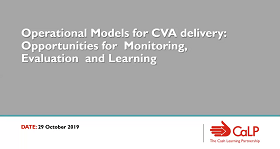
Monitoring, Evaluation and Learning: how to ensure efficiency, effectiveness and accountability
Blog Post
What are the key issues these and other emerging models are facing as they design to deliver better for people in crisis? What are the opportunities and challenges presented by working together differently?

The Future of Financial Assistance: Why we wrote it, and where next
Blog Post
The world is changing rapidly. The way we deliver assistance is not. The CALP Network and IARAN’s new report on the Future of Financial Assistance makes clear that (i) significant change is urgently needed – new partners, new tools, new modes of collaboration, (ii) change must be drive by what’s...

Biometric Data Collection in Humanitarian Action: Through the lens of responsible data management
Webinar
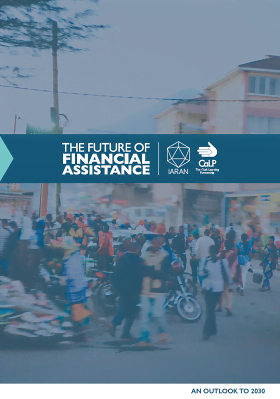
The Future of Financial Assistance: An outlook to 2030
Report
This major publication developed by the CALP Network and IARAN draws on extensive research with a broad range of stakeholders from across the humanitarian sector and beyond, and innovative foresight analysis. The report maps out potential scenarios for how financial assistance might look in 2030, the key...
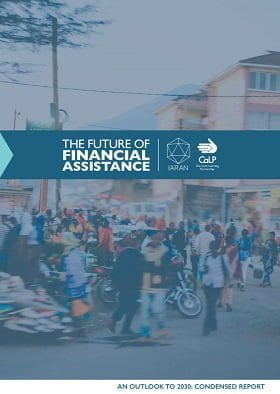
The Future of Financial Assistance – Condensed version
Report
The growing use of cash to meet humanitarian needs is challenging traditional sector and mandate based models, and bringing with it opportunities to work with new partners and tools. With its links to other reforms in humanitarian assistance, such as the push for localisation, participatory approaches,...

Future of Financial Assistance Infographics
Presentation
Key drivers of change
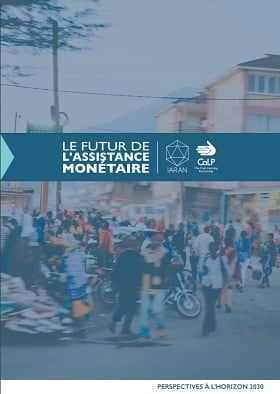
Le futur de l’assistance monétaire – résumé analytique
Rapport
L’utilisation croissante des transferts monétaires pour répondre aux besoins humanitaires met au défi le secteur traditionnel et les modèles calés sur les mandats des agences, et crée des opportunités pour travailler avec de nouveaux partenaires et outils. En raison de ses liens avec d’autres...
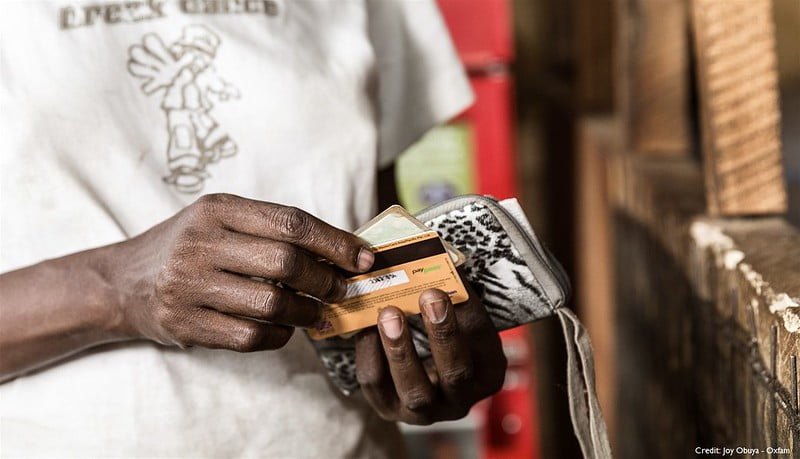
Introducing the Cash Coordination Tip Sheet
Webinar
The CALP Network has developed a tipsheet setting out established best practice and key guidance and resources for all aspects of cash coordination, intended as a clear, accessible and action-oriented guide for those engaged in coordination of cash and voucher assistance at the field level.

Operational Models: Accountability to affected people
Webinar
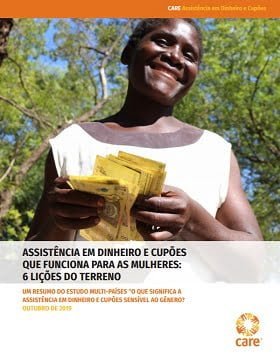
Assistência em Dinheiro e Cupões que Funciona para as Mulheres: 6 lições do terreno
Report
A Assistência em Dinheiro e Cupões (CVA) é actualmente uma ferramenta comum na acção humanitária que é utilizada para fazer face, com maior dignidade, às diversas necessidades de pessoas refugiadas por motivo de crises e conflitos. Embora existam cada vez mais evidências do efeito da CVA no...

Consent and Ownership in the Shift to Digital Cash and Voucher Assistance
Blog Post
Part of committing to cash and voucher assistance (CVA) is committing to going digital and collecting data. While they are two different things, they are deeply intertwined. And while an organisation can ‘go digital’ without cash programmes, it’s nearly impossible to commit to cash programmes in the...

À Quoi Ressemblent les Transferts Monétaires Sensibles au Genre?
Rapport
CARE s’est engagé à être « prêt» lorsqu’il est question de réaliser des avancées décisives pour les femmes et les filles dans son intervention monétaire, et à impliquer d’autres parties prenantes sur les aspects sexospécifiques des TM. En s’appuyant sur cet engagement, CARE a...
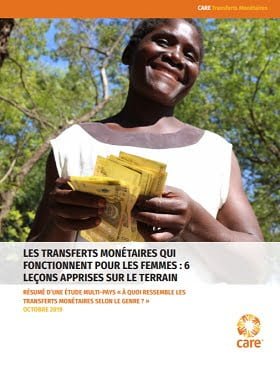
Les Transferts Monétaires qui Fonctionnent Pour les Femmes : 6 leçons apprises sur le terrain
Rapport
Le transfert monétaire (TM) est désormais un outil courant dans l’action humanitaire, utilisé pour répondre avec une plus grande dignité aux divers besoins des personnes déplacées par la crise ou les conflits.1 Bien qu’il y ait un nombre croissant de preuves sur l’effet du TM sur le...

Harmonising Data Systems for Cash Transfer Programming: Three key steps for Somalia
Blog Post
Cash and voucher assistance (CVA) is gaining traction as a transformative tool for addressing humanitarian needs in Somalia, with people living in crisis reporting that transfers of this kind helped to build resilience and diversify livelihoods. Delivery, however, is plagued by data challenges around the...

Linking Social Protection and Humanitarian Response – Best Practice
Report
This review looks at the alignment of humanitarian response in refugee crises with national social protection systems. It examines the experience of three countries dealing with protracted refugee situations: Turkey, Lebanon and Cameroon, and also identifies lessons from other literature. The number of...
